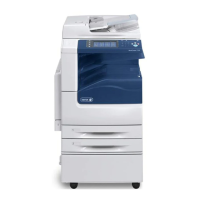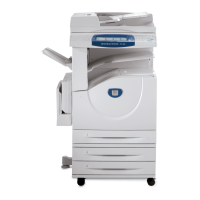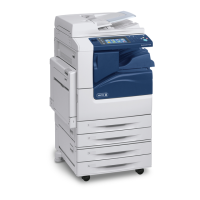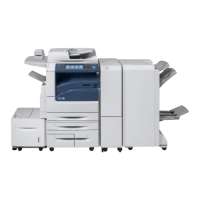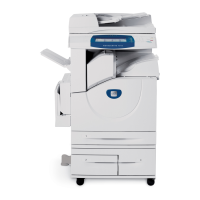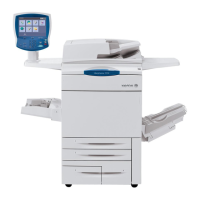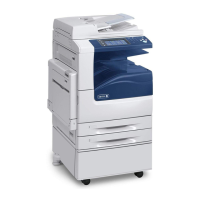ERROR
CONDITIONS
The
card
reader
is
capable
of
detecti
ng
and
reporti
ng
the
following error
conditions
to the
controlling
system:
incor-
rect
length,
inval id EBCDIC punches,
data
overrun, and
read
veri fy (Mode I
7140-02)
errors.
INCORRECT LENGTH
Incorrect
length
is
caused by
the
card
reader
encountering
end of
card
prior
to
the
"count
done"
signal from the
con-
trolling
system or by the
occurrence
of
the
"count
done"
signal prior to
reading
column 80
of
the
card.
Thus,
ex-
actly
120 bytes must be
requested
for
the
binary read mode
and
exactly
80 bytes must be requested for
the
EBCDIC
read
mode;
otherwise,
an
incorrect
length
condition
will
be
sig-
naled
to
the
controlling
system. However,
the
card
is
al-
ways
directed
to
the
stacker
specified
by bits 2 and 3
of
the
Read
order.
INVALID
EBCDIC
PUNCHES
When
the
card
reader
has
received
a Read
Automatic
order
and column 1
of
the
card
does
not
have
punches
in rows 1
and 2,
any
punch
configuration
(including
column
1)
that
cannot
be
converted
into
8-bit
EBCDIC
(i.e.,
more
than
one
punch in rows
1-7)
is
considered inval
id.
Detecting
an
invalid
EBCDIC punch
configuration
causes the
card
reader
to
generate
eight
zeros
as the
data
for
the
invalid
column
and
to
request
the
controlling
system
to
check
parity,
in
which
case
the
controlling
system sets its Transmission
Data
Error
indicator
to
1.
(Xerox
530
and
Sigma
2/3
indicate
validity
errors by
setting
the
parity
error
(E)
flag
in
the
odd
channel
register,
not
the
transmission
data
error
(TE)
flag
in
the
even
channe
I
register.)
If
the
Read Automati
corder
specified
error
stacking,
an
invalid
EBCDIC punch
config-
uration
causes
the
card
to
be
di
rected
to a I
ternate
stacker
2
(Model 7120) or
the
alternate
stacker
(Model 7140).
DATA
OVERRUN
A
data
overrun
(rate
error)
is
defined
as
failure
of
the
con-
trolling
system
to
service
the
card
reader
at
the
required
data
transfer
rate.
If
the
Read order
specified
error
stacking,
a
data
overrun causes the
card
to be
directed
to al
ternate
stacker
2 (Model 7120) or the
alternate
stacker
(Model 7140).
READ
VERIFY
(MODEL
7140-02)
A
read
verify error
is
caused
by fai lure
of
the
card
reader
to
read
the same
data
at
both read
stations.
If
the
Read order
specified
error
stacking,
a
read
verify
error
causes
the
card
to
be
directed
to
the
alternate
stacker.
NOT
OPERATIONAL
CONDITIONS
A
"not
operational"
condition,
generally,
is
any
condition
that
causes a
peripheral
device
to switch to the
"not
opera-
tional"
state.
For
the
card
reader,
any
of
the
following
fault
conditions
(singly
or
in
combination)
may
occur
during
a
card
read
cycle:
1. Read
station
malfunction.
2.
Transport mechanism
malfunction
(i.e.,
card
jam).
3.
Absence
(or
failure)
of
ac
and/or
dc
power in the
reader.
CARD
READERSTATUS
RESPONSE
The
card
reader
system
is
capable
of
returning various status
flags in response to
computer-executed
I/O
instructions.
Detailed
explanations
of
the
input/output
instruction
to
re-
quest
status
of
the
card
reader
are
contained
in
the
reference
manuals for Xerox computers. The following paragraphs
explain
the
significance
of
each
status flag
returned
to
the
contro
II
i ng system by
the
card
reader.
1/0
INSTRUCTION
STATUS
BITS
The
execution
of
an
I/O
instruction by
the
controlling
sys-
tem provides two bits of
immediate
information
pertaining
to
the
general
status
of
the
addressed
I/O
device
and its
con-
troller.
This information
is
retained
by
the
controlling
sys-
tem in a form
that
allows
for
conditional
branching
based
on
the
response
to
the
I/O
instruction.
Table 5 lists the
I/O
instructions,
the
possible status
bit
settings
provided by
each
I/O
instruction,
and
the
significance
of
each
setting.
DEVICE
STATUS
BYTE
Eight bits of information in the
Device
Status Byte
are
made
avai
I
able
to the computer in response to
the
execution
of
an
I/o
instruction,
as shown in Tables
6,
7,
and
8.
OPERATIONAL
STATUS
BYTE
In
addition
t~
the information
contained
in the
Device
Status Byte, the
Operational
Status Byte
generated
at
the
end
of
each
I/O
operation
a
Iso
provides i ndi
cators
to
the
controlling
system (see Table 9).
PROGRAMMING
CONSIDERA
liONS
SEQUENCE
OF
ACTIVITY
Figure 3
illustrates
the
sequential
relationship
of
the
key
events
that
occur
during a
card
reading
operation.
TIMING
INFORMATION
Figures
4,
5,
6, and 7
illustrate
the
time-dependent
events
occurring
during a card
reading
operation
for
the
respective
models.
Card
Reader Status Response/Programming
Considerations
7

